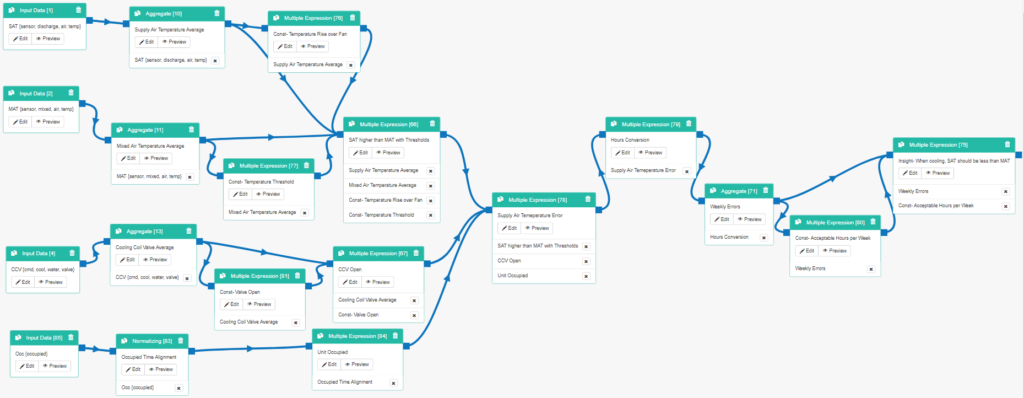Determine if cooling control is ineffective/unresponsive
Applicable Systems
- Primary: AHU, RTU, MUA, ERV
Objective/Method/Outcome
- Objective: Determine if the cooling system is having issues due to possible improper sequencing or equipment failure. Based on NIST APAR 16.
- Method: Check if the SAT is greater than the MAT when the CCV is open during occupied hours.
- Outcome: An insight is generated if the SAT is greater than the MAT while the CCV has been open for more than 12 hours.
Logic
If(SAT > MAT + Temperature Rise Over Fan + Temperature Threshold) {return true;}

Inputs
- SAT {sensor, discharge, air, temp} (Real Trend Log)
- MAT {sensor, mixed, air, temp} (Real Trend Log)
- CCV {cmd, cool, water, valve} (Real Trend Log)
- Occ {occupied} (Binary Trend Log)
Notes
This rule compensates for the temperature rise across a supply fan between the MAT and SAT sensors. This value varies per system, and the parameter should be changed within the logic flow accordingly. The temperature rise over a fan is currently to 1.1 degrees in accordance with NIST recommendations. The CCV must be over 20% in order for this rule to take effect, as its cooling effects will be insignificant otherwise.
Parameters
| Parameter | Expression Block Series Number | Description | Default Value (Units) |
|---|---|---|---|
| Temperature Threshold | 77 | The acceptable temperature deviation from set point that is considered normal | 2 (C) |
| Temperature Rise Over Fan | 76 | The temperature increase cause by air passing over a fan. This should be changed based on the site and system. | 1.1 (C) |
| Valve Open | 81 | The valve position for which the cooling provided by the CC is considered significant. | 20 (%) |
| Acceptable Hours per Week | 80 | The amount of time that this error is allowable for the unit per week. Anything more than that time is considered a fault. | 12 (h) |